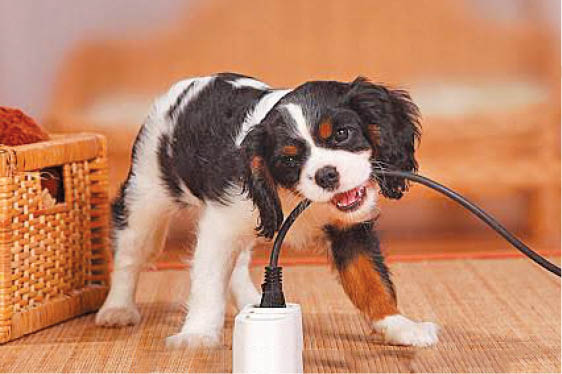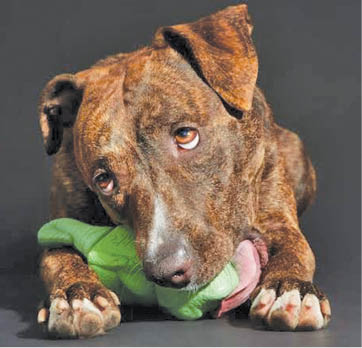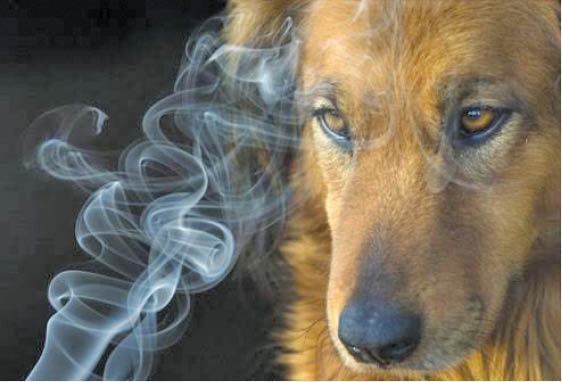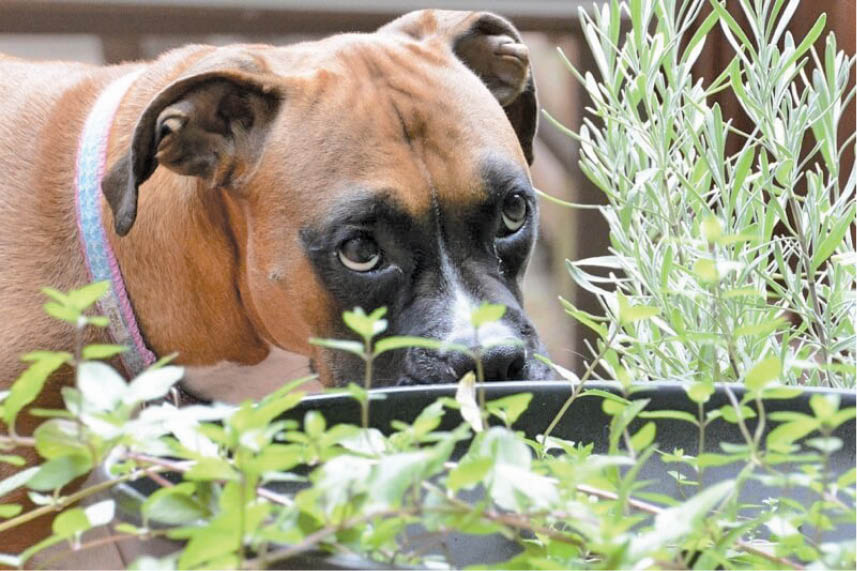 Every year thousands of animals needlessly suffer and many die due to accidental ingestion of household poisons. To many pet owners, the innocuous looking plant, or the cigarette butt left in the ash tray or the loose wires may not ring warning bells, but to an inquisitive dog that toys with these items, it could mean death. If you own a pet or are planning to get one, it is important that you dog-proof your home. Here are some of the most common poisons that lurk within our homes:
Every year thousands of animals needlessly suffer and many die due to accidental ingestion of household poisons. To many pet owners, the innocuous looking plant, or the cigarette butt left in the ash tray or the loose wires may not ring warning bells, but to an inquisitive dog that toys with these items, it could mean death. If you own a pet or are planning to get one, it is important that you dog-proof your home. Here are some of the most common poisons that lurk within our homes:
Cigarettes – Kick The Butt: We all know the dangers of smoking. But here’s one more reason to kick that butt – research shows that second-hand smoke – already known to be harmful to humans – can harm dogs too. In 2001, a study conducted confirmed that dogs that lived with smokers were more likely to have cancer than dogs that lived with nonsmokers. Nasal cancer is the most common form of cancer in dogs, and is the most commonly diagnosed cancer of the respiratory system. The dog’s risk of developing certain kinds of cancer increases when there’s more than one smoker in the house. While some breeds are more susceptible to certain types of cancer, all dogs that live with smokers are at a greater risk for some form of cancer than dogs that live in non-smoking homes.
 Smokers also need to ensure that their dogs do not ingest a cigarette butt by mistake. A butt left in an ashtray can be tempting to a nosy or bored pup that might accidentally chew on it or ingest it. Signs of nicotine poisoning, which can develop in 15 to 45 minutes, can include excitation, salivation, panting, vomiting and diarrhoea; increased heart rate and cardiac arrest can follow.
Smokers also need to ensure that their dogs do not ingest a cigarette butt by mistake. A butt left in an ashtray can be tempting to a nosy or bored pup that might accidentally chew on it or ingest it. Signs of nicotine poisoning, which can develop in 15 to 45 minutes, can include excitation, salivation, panting, vomiting and diarrhoea; increased heart rate and cardiac arrest can follow.
Keep all cigarettes, cigars, and other nicotine products, such as patches and gum out of a pet’s reach. Since butts contain about 25 percent of the total nicotine content of a cigarette, they present a real danger. If a pet does ingest nicotine-containing products, seek emergency medical help from your veterinarian.
Household Cleaners: Most pet owners are careful about keeping common household cleaners such as bleach, detergents, drain cleaners and disinfectants out of harm’s way. But few of us realise that because our pets spend so much time lying on the ground, they are in direct contact with these harmful substances which can rub off onto their fur and get ingested when the pet grooms itself.
Many household cleaners contain formaldehyde – a chemical that can cause severe irritation to a dog’s eyes, throat and skin. Carpet shampoos, wood polishes, fabric softeners and washing powders all can be toxic to pets at one level or another.
The safest option is to try and switch to a more pet-friendly or environment-friendly brand with limited chemical content. Before purchasing any household cleaner, read the label and any warning on the product carefully as some cleaners do not carry the mandatory warnings of the chemical dangers they pose to life.
Signs of poisoning include vomiting, lethargy, burns to the mouth, drooling, muscle weakness and/or convulsions and seizures. If you suspect your pet has ingested a cleaner, call your vet immediately. Do not attempt to induce vomiting – the toxin could burn your pet’s throat on its way out.
 Plants – Leaf It Alone: That colourful plant in the corner may never catch your eye as a potential poison, but the truth is that many an indoor plant can be poisonous to your pet if ingested. Dogs – especially pups and adolescent canines, enjoy chewing on leaves and stems so it is imperative that you make sure that all the plants in your home are safe and non-toxic to pets.
Plants – Leaf It Alone: That colourful plant in the corner may never catch your eye as a potential poison, but the truth is that many an indoor plant can be poisonous to your pet if ingested. Dogs – especially pups and adolescent canines, enjoy chewing on leaves and stems so it is imperative that you make sure that all the plants in your home are safe and non-toxic to pets.
Some of the plants that can harm your pet include caladium, dieffenbachia (dumb cane), Jasmine, Philodendron, Oleander, Lantana, Hydrangea and Bleeding heart. Symptoms can range from diarrhoea and vomiting to seizures and even respiratory failure. If you suspect your dog has ingested a poisonous plant, and is showing symptoms, immediately rush it to your vet along with a sample of the plant.
While poisonous plants should certainly be kept away from dogs, it is also a good idea to discourage dogs from nibbling on any variety of plant, as even non-toxic plants can lead to minor stomach upsets. But if your pet has existed alongside a poisonous plant without any problems, experts suggest that there is no need to remove the plant from your garden.
Electrical Cords – Shocking Truth: Dogs, especially puppies, love to play with anything that is hanging. Loose electrical cords and wires pose a dangerous threat to an inquisitive mouth. If your dog chews through the rubber coating of an electrical cord that is connected to an electrical socket, it may receive a severe electrical shock. When it receives the shock, it will cry out in pain; further inspection will reveal burns within the mouth, lips and tongue – with the areas getting red and irritated. In more severe instances, the electrical current may travel into the dog’s body and cause damage to the lungs as well. The damaged lungs generally fill with fluid within several days following the electrical shock. Dogs with damaged lungs from an electrical shock will have difficulty breathing and may die if left untreated. Any animal that is suspected of receiving a shock should be monitored closely for several days for signs of burning and/or lung damage.
The best way to prevent this nasty occurrence is to unplug all appliances when they are not in use and avoid leaving cords exposed. Alternatively, you can encase cords in a plastic PVC pipe. Also check that there are no electrical wires hanging low and make sure that lamps and any electrical appliances that can be pulled over are securely fastened or out of your dog’s reach. Do periodically check electrical cords and wires for teeth marks – it can alert you to a potential problem.
(Watch out for Part – II in our next issue)
- Cracking The Canine Contentment Code: What Makes Dogs Happy - 10 August2024
- The Dark Side Of Pampered Pets: Is Your Kindness Harming Your Dog? - 16 March2024
- Kids And Preventing Dog Bites - 18 March2023
